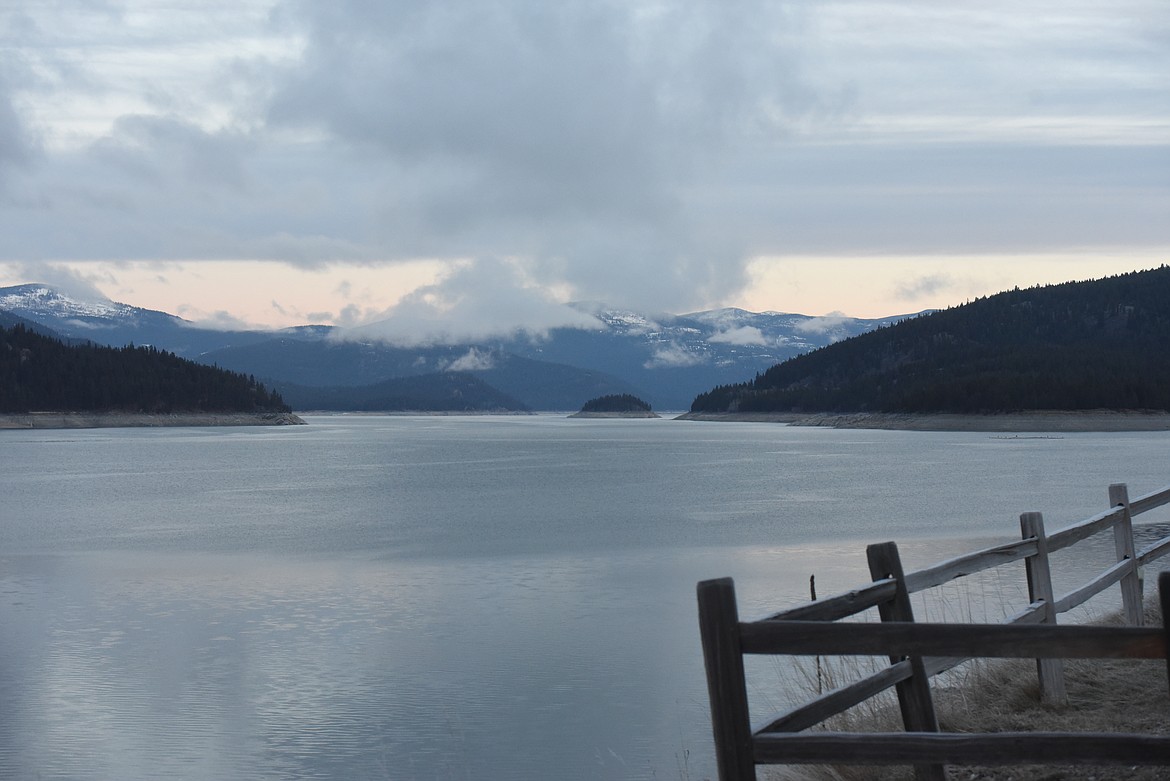Lincoln County ask DEQ to weaken selenium standards for Lake Koocanusa
Officials in Lincoln County are asking the Montana Department of Environmental Quality to ease its standard for selenium pollution in Lake Koocanusa, the 92-mile reservoir bridging the U.S.-Canada border in Northwest Montana.
It’s not the first time the Lincoln County Commission has sought this change. In 2021, the commission submitted a similar petition challenging the current DEQ standard of acceptable selenium concentration of 0.8 micrograms of selenium per liter of water — a more stringent threshold compared to federal standards.
Selenium is a mineral often found in coal-rich deposits. A primary source of the selenium found in Lake Koocanusa can be found by tracing its tributary, the Elk River, which enters the reservoir roughly 16 miles north of the U.S. border, into the mountains of British Columbia.
Those mountains are being mined by Teck Resources Limited, and the mining operations have caused increases in selenium pollution in the Elk River, according to multiple studies spanning more than a decade.
A recent U.S. A Geological Survey study published in 2023 linked the expansion of mining operations with increased selenium and nitrate concentrations over decades, and indicated selenium concentrations in Koocanusa had not met Montana’s site-specific standards since 2020.
Teck was fined $60 million in 2021 for dumping harmful materials into the river and harming westslope cutthroat trout, white sturgeon and other fish populations. Excessive selenium accumulation in fish can lead to detrimental effects including growth inhibition and reproductive impairments.
However, Teck has also lobbied for moderating the site-specific selenium standard in Lake Koocanusa, submitting the same petition as Lincoln County back in 2021.
The new petition from the county comes amid an ongoing lawsuit between the Montana Board of Environmental Review – a quasi-judicial body that handles environmental permit disputes — Teck, and Lincoln County, and a multitude of environmental groups led by the Montana Environmental Information Center seeking to keep the stronger pollutant standard in place.
The lawsuit challenged a BER decision to throw out the 0.8 micrograms-per-liter rule and align the standard with the federal 1.5 micrograms-per-liter rule.
Lincoln County officials are now hoping the petition for rulemaking will lead to a change in the selenium standard through the bureaucratic process, and end the legal fight.
The petition would “correct the rule that’s currently in place that is more stringent than the federal standard, to make it in line with what it should be scientifically,” attorney Aimee Hawkaluk told the commissioners at their June 4 meeting, when they voted to send the petition to the state.
The petition says the standard is an “overly restrictive environmental regulation” that hurts the county’s economy by “deterring new business investment in the region and placing additional burdens on existing industries.”
The petition also argues that data from fish tissue and ovary samples tested for selenium in recent years have over-represented the pollutant, and should be reconsidered in light of more recent sampling guidance issued by federal agencies.
The Department of Environmental Quality will hold a public hearing on Aug. 13 in Helena. Interested members of the public may also participate virtually via Zoom.
Written data, views, or arguments may also be submitted to the Department of Environmental Quality, 1520 E. Sixth Avenue, P.O. Box 200901, Helena, Montana 59620-0901; faxed to (406) 444-4386; or e-mailed to DEQLakeKPetition@mt.gov. To be guaranteed consideration, mailed comments must be postmarked no later than 11:59 p.m. on Aug. 13, 2025.
A transboundary concern
Selenium pollution in Lake Koocanusa has been a concern for both countries and tribal nations in the area for years.
In 2012, the transboundary Ktunaxa Nation raised concerns about reduced water quality from coal operations, and the British Columbian Government in 2013 issued an order seeking to stabilize and reduce contaminants, including selenium, leaching from the mine into the Elk River.
Last year, the International Joint Commission, an organization created by the United States and Canada to resolve disputes related to shared waterways, convened a board of experts to study the issue of transboundary pollution in the Elk-Kootenai River basin.
In March, the commission released a plan of study outlining the objectives for the board, including collecting and analyzing data on water quality and pollutants, determining impacts to ecosystems and human health, and identifying possible mitigation and remediation efforts.
Interim results of the study board are expected to be presented to the commission in September, with a final report provided in fall of 2026.

